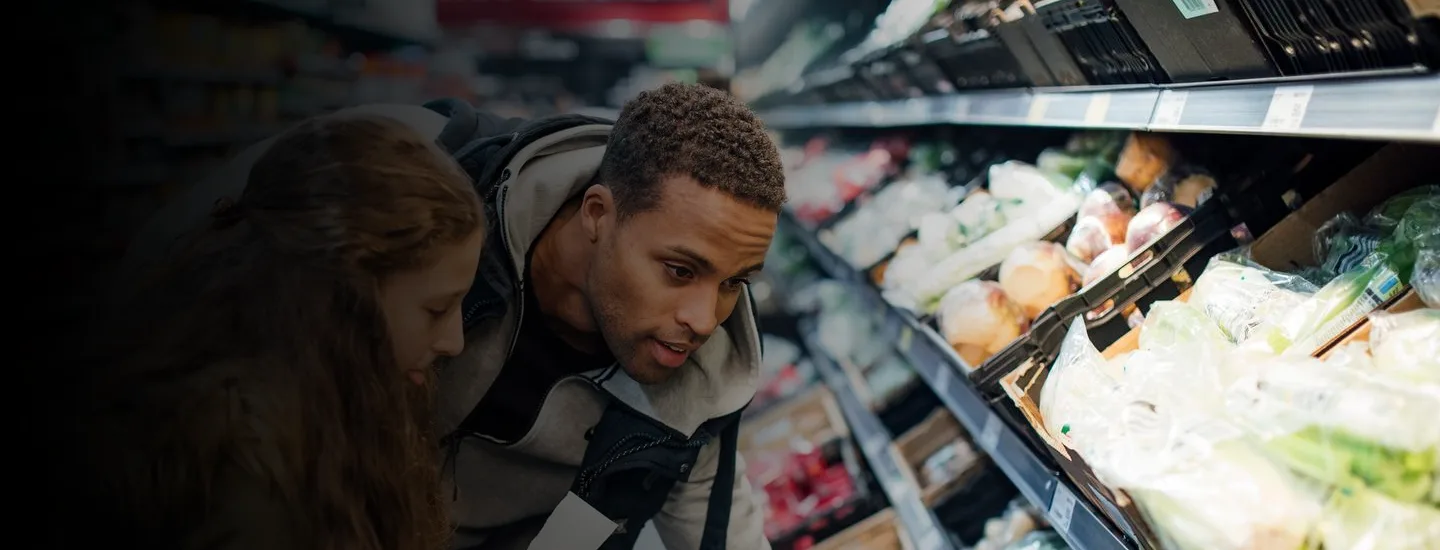With traditional grocery’s share of the fresh food dollar on the decline, communication about produce, protein and prepared foods is more critical than ever. In this five-part series, “Don’t miss out,” AlixPartners experts break down the often-missed marketing opportunities grocers must seize to experience the full power of fresh for their business.
Grocers count on their fresh offerings to keep shoppers coming back, and their marketing should reflect that reality. A status quo approach, which prioritizes center store with its infinite promotional funds, will deliver a status quo result: traditional grocery continuing to lose fresh food dollar share to channels like mass and club.
In a sprawling media landscape, grocers have to work smarter than ever before to attract the attention of their shoppers in a way that comes across as perceptive rather than pushy. To accomplish this goal, grocers have to rethink everything. All the ways in which grocers reach their customers should be eligible for reimagination. The bar for customer knowledge must be raised. Any hesitations toward deeper partnership with key fresh suppliers should be reconsidered. Walls between internal teams must be knocked down.
The most important part of any review exercise is the willingness to contemplate shopper feedback about current practices, engage different people for additional perspectives, and challenge the conventional wisdom of “We’ve always done it this way.” Here are some questions grocers should ask as they get started.
1. Prioritize selling conversations with your suppliers
Grocers would be well served to identify category-leading suppliers of their perimeter departments and simply ask them to share what best practices, challenges and opportunities they observe.
- What retailers are best-in-class when it comes to how they market and merchandise your products?
- What are the stories about your products that, if told in a compelling way, would draw consumers in?
- Which of our retail media opportunities could move the needle for you, if it were an affordable option?
Grocers should keep the conversations going with quarterly check-ins and continue to brainstorm ways they can grow together. Perhaps team members could take an in-person or virtual tour of a farm or fishing boat, or maybe there’s an opportunity for ongoing retailer-supplier learning exchanges between high-potential associates. The only way to know what’s possible is by asking questions and remaining open-minded.
2. Unite your merchants, your marketers and your stores
Many grocers have historically taken a “divide and conquer” approach with regard to the functions of buying, marketing, and operating. While dividing is sometimes easier than collaborating, conquering requires the latter. Grocers with that goal should start by setting the effort up for success from the start.
- Who from each team would be an enthusiastic liaison to the other groups?
- What changes need to happen to align the goals and incentives of all three teams?
- What will be meaningful ways to celebrate the wins that come from this collaboration?
As grocers form task forces to keep merchants, marketers and stores in the loop on each other’s activities, they should encourage these team members to take time to learn about each other’s roles – what makes them excited to go to work each day and what keeps them up at night. Generating more connection and appreciation between the individuals charged with keeping these teams connected will make for a smoother process and much stronger collaboration.
3. Lean into omnichannel to expand your experience advantage
Most grocers have developed a wealth of content on how to use the products they sell, but much of that content resides beyond the store. Grocers need to consider how to leverage the resources and tools they offer online to make in-store shopping better, and they must explore how to use learnings from their stores to optimize online. If grocers pursue only one of those paths, they’ll miss critical chances to innovate and differentiate.
- What are the most popular features of our stores that we should allude to or mirror online?
- What are the most popular features of our website and app that we should allude to or mirror in store?
- What are the places throughout the store where it makes sense to offer more content via QR codes?
Shopalongs can provide invaluable opportunities to get into the customer’s head and understand what questions they’re working to answer as they shop. Getting a better feel for what matters to customers in those critical moments can help grocers know what kind of content to prioritize for the limited space available in stores. In the face of budget or time constraints, similar research can be done through geotargeted online surveys that customers can be prompted to fill out when they’re in the store, right after they leave, or at other key points.
4. Know your shoppers beyond your own channels
Grocers need to explore how to be present in the places their shoppers go when they’re researching fresh food. They should also learn where shoppers go for information and entertainment in general.
- How do our customers typically consume content – text, audio, video, video with captions, etc.?
- What recipe and meal-planning sites do they use?
- How do we want to split our financial resources and human capital between our channels and external ones?
Grocers should always strive to meet their shoppers where they are. Relevant places to meet shoppers online might include the accounts of regional food influencers or favorite recipe sites that let them fill their cart quickly. Community-specific opportunities might include sponsoring local teams and events; while grocers have been engaging customers that way for many years, they should take care to not let those connections fade as they grow.
5. Embrace experimentation and start now
As with any pilot, grocers can start small as they test these ideas. Best practices for trials always include selecting a project with potential for a quick win, where a small change could make a meaningful impact.
- What’s a category that has stalled out and should be doing better than it is?
- What’s an idea the team would be energized to explore?
- What’s the right store mix to pilot some of the opportunities the team wants to test?
One final question grocers should ask as they embark on this process: What does success look like? There should be evaluation plans for each project, but grocers should also consider the value of learning and engaging their teams in taking a proactive approach to the business. A culture of innovation always breeds success.
__________________________________________________________________________________________
Want more? Check out these other recent insights from the grocery experts at AlixPartners.
The real barrier between grocers and better supply chains
What Instacart’s prospectus reveals to grocers about the future of retail media
Assess before you invest: Why a data deep dive must be the first step for grocers exploring AI
Three ways grocery retailers can promote more profitably in fresh


